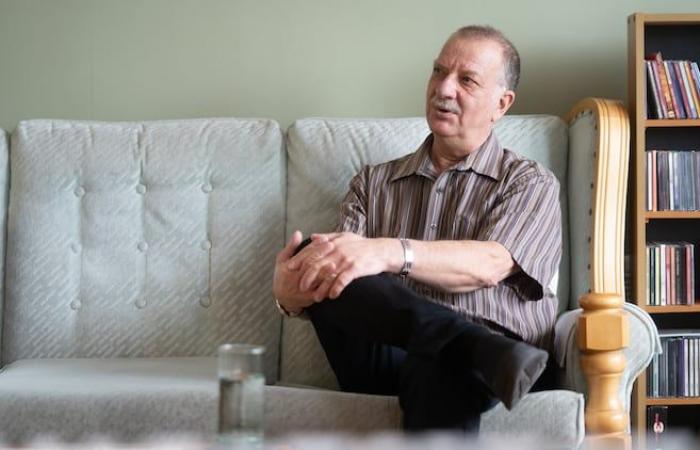This feeling of running out of air is heard in his voice and emerges in his tense smile after having to go down and back up 14 steps to meet me. Réjean repeated the same exercise a few minutes later, upon the arrival of the photographer colleague who, like me, did not immediately realize the physical effort that our host had just made.
However, his doctor was categorical when he announced his diagnosis in the fall of 2011… “You should sell and move to a single-storey house.”
The long stairs of his two-story house – not to mention his former business located in a room on the ground floor – were contraindicated for the patient, then 49 years old, an upholsterer from Shawinigan, a photography enthusiast and passionate about hiking.
His triplex has been for sale for two years, but buyers are not flocking to his neighborhood. His neighbors don’t guess this either when greeting him: “Sometimes I’m not able to move 10 feet forward…”
Excursions to mountain tops are part of his old routine as an active guy, who also had the good habit of going to the gym at least three times a week.
The upholsterer was his own boss, used to working endless hours. He had to close his workshop and resign himself to receiving disability pensions.
“Réjean saw his life turned upside down when symptoms of intense shortness of breath appeared, transforming simple tasks like tying his shoelaces or crossing the street into real ordeals,” said the email inviting me to meet him as part of the Mois de la awareness of pulmonary arterial hypertension.
A very active man, Réjean Dupont had to mourn his job as an upholsterer following the diagnosis of pulmonary arterial hypertension. (Stéphane Lessard/Le Nouvelliste)
This is not the first time that Réjean Dupont has told his story, even if, each time, it involves making him relive all kinds of emotions, including the fear he felt the day he was told that he was suffering from a rare, progressive, even fatal disease.
“It’s like a punch you receive in the face,” explains the man who inherited a very severe form of pulmonary arterial hypertension (PAH).
A digital piano sits in the middle of the living room. The instrument is his ally when morale wavers. “I play to clear my head…” It lasts for a song or two, until fatigue overtakes him like an endless scale of music.
“The more you use your muscles, the more oxygen they require…”, recalls Réjean who cannot ignore the signs that his body sends him when his fingers run over the keyboard. The irregular beating of his heart encourages him to moderate the rhythm, to listen to his jerky breathing.
On this, he gives me a publication from the Canadian Lung Association explaining the broad outlines of a disease difficult to diagnose since its symptoms can be confused “with those of many more frequent conditions”, it emphasizes, specifying that PAH is characterized by “high blood pressure in the lungs and develops when there is weakening or scarring of the pulmonary arteries”…
Untreated, this disease can cause “the enlargement and weakening of the right side of the heart, a form of heart failure”, the document that Réjean Dupont knows by heart from having read and reread it further informs us. .
Without treatment, the average life expectancy of a person with pulmonary hypertension is less than three years. Approximately 5,000 Canadians have received the diagnosis, but twice as many could be affected, hence the importance of consulting a doctor when you are abnormally short of breath, advises Réjean Dupont.
It’s not always about fitness. Heredity may in particular be to blame. This is his case. Two members of his family did not survive this illness, which also called for courage. Pure and hard.
For the first seven years following his diagnosis, Réjean Dupont lived with a pump attached to him seven days a week, 24 hours a day. The only existing treatment was medication administered intravenously which has since been replaced by tablets. oral.
Certainly, his quality of life is improved, but for now, PAH will always be part of his daily life disrupted by bereavements and an isolation that he must endure to truly understand.
Fortunately there is Francine, his wife and his caregiver. She has seen her man undergo a battery of medical examinations since 2011, upon returning from a trip to the Rockies where shortness of breath invaded the hiker and their lives together.
The woman knows full well that her man is not always doing well, even when he says that “it’s holding up” so as not to worry her. Réjean suffers from an illness that is as invisible as it is omnipresent. And how insidious.
Despite everything, he insists: “I always turned around on a ten cent. I always looked at the glass half full.”
And talking about it allows him to feel a second wind.






